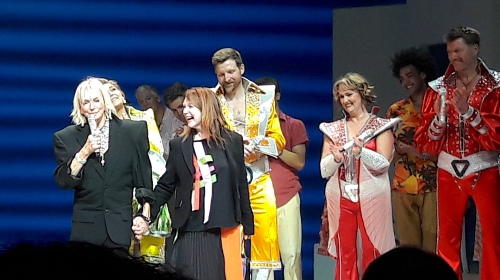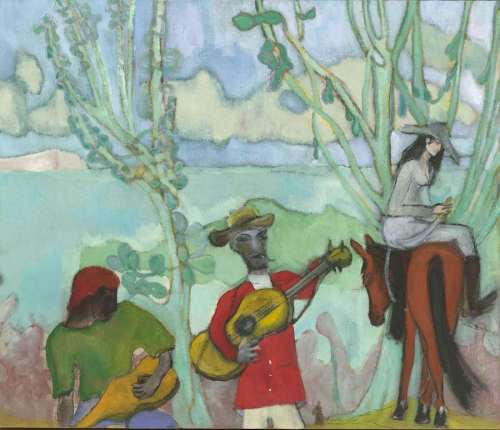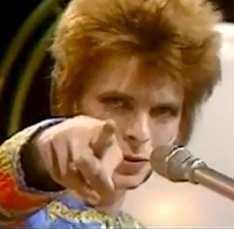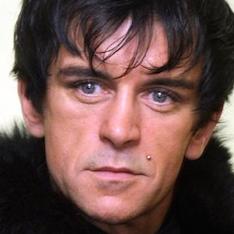
Duran Duran: Who’s who in this debut line-up on 16 July 1980 onstage at the Rum Runner in Birmingham? (More to the point, who actually took this photo?)
❚ NEVER SEEN BEFORE! Or so I thought a few days ago! This superb colour photo of Duran Duran’s debut gig introducing Simon Le Bon on vocals and Andy Taylor on guitar has just been published on Facebook. The band are captured live on 16 July 1980 at Birmingham’s stylish nightspot the Rum Runner and fans have been amazed at a certain blondness and general skinniness of the performers, but after all their average age is only 20. From the left: Yes Simon is blond, yes “Tigger” John Taylor looks truly gangly on bass, yes Andy is in leopard-print pants, and yes Nick Rhodes is playing the Crumar synth at rear. (Drummer Roger Taylor is sadly not visible.)
This sensational picture arrived on the Durantastic World page at Facebook on the 43rd anniversary of the gig and I was one among many fans who had never seen it before. Yet the DW Admin couldn’t say who took it. One follower, Emma Leigh, attributed the image to a photographer who goes only by his Twitter handle @Birmingham_81 (currently unused) and otherwise remains anonymous! Baffled and amazed by suddenly discovering that any photo of Duran’s live debut existed, I embarked on a prolonged Google search.
As the day went on I actually unearthed FOUR photos of that 1980 gig – now published here on this page – which were buried perhaps unsurprisingly in one official Duran website dating from 2015, and another encyclopedic online history of the band in 2018, so all the more puzzling that they haven’t spread widely across social media circles. The best pic, shown here at the top, has sat in DD’s album page at Facebook since 2015, unforgivably dated wrongly to 12 March 1980, months before Le Bon joined the band.
A second pic was also posted by DD at Facebook in 2018 on the correct anniversary of the debut. This is the frontal view in which we can just see Roger on drums, though really too small to enlarge very successfully. Further googling led us through Not Your Mother’s Playlist, a blog by Christina, a 25-year-old pop culture addict from San Francisco who pictured the key photo without comment in 2019, and on to Duran Compilations which uniquely revealed two further pix from DD’s debut in 2018 while showing all four on one page – see below – again without special comment or hint of a source! This website detailing the band’s unofficial history was “compiled and developed by Ansgar Thomann in dedication to the 40th anniversary of Duran Duran’s birth”. He based the anniversary on 1978, when the idea of DD was born!
All four images make a fascinating testament to DD’s sense of style, especially Le Bon. Sad that nobody seems sure who took these landmark photos.
IMAGES SCARCELY SEEN BEFORE – CLICK TO ENLARGE

July 1980: DD stake their claim as the Rum Runner’s house band… Here, Simon, John and Andy

Duran Duran: Who’s who in this debut line-up on 16 July 1980 onstage at the Rum Runner in Birmingham? (More to the point, who actually took this photo?)

July 1980: Frontal view just about reveals Roger on drums…

July 1980: Simon brings his song-writing clout to the Berrow brothers’ “good-looking poser band”

July 1980: Jacket on, Andy wears red…
Core band members had been employed for a year or more around the Rum Runner by its owners, the brothers Michael and Paul Berrow, as bouncers, deejays and glass collectors, while a series of new musicians were tried out and let go.
Cristina’s NYMPL reports: “In 1978, cool kids Nicholas Bates and Nigel Taylor (who would then become Nick Rhodes and John Taylor) handed the Berrows a demo tape for their fledgling band Duran Duran and the rest is history; they held auditions until D-Squared became a full-fledged band with a guitarist and everything, and the Berrows became their managers.”
She adds: “Guitarist Andy Taylor recounts many interesting things in his book Wild Boy (a fantastic read). He talks about the wild behaviour of the club-goers – how flamboyantly they dressed, how behaviour norms didn’t apply and how sex, drugs, and glam rock were paramount. He also talks about the aptly named ‘Sex Offender’s Room’ (‘People weren’t politically correct, then,’ he writes), where the Durans and the Berrows dragged in a nice fluffy bed in a vacant corner, and then would purposefully walk in on one another when they were enjoying the, uh, intimate company of their guests.”
Simon Le Bon told Quietus in 2011: “I had some pretty amazing sex-and-drugs combined occasions. Which, ultimately, were very rock’n’roll. Just thinking back to the Rum Runner, what a place that was for five guys. . . it was probably illegal. In fact, a lot of it was definitely illegal.”

DuranCompilations pulls out the plums, 2018: two more new images to make four DD debut pix scarcely ever seen
Once the 1980 line-up was finalised, it then took DD another six months as the club’s house band before landing a contract with EMI. During this time London’s New Romantic heroes Spandau Ballet notched their first chart single before year’s end. In February 1981 DD’s first single Planet Earth charted at number 12 with the phrase “New Romantic” unsubtly woven into the lyrics, while cool London bands refused to subscribe to the term.
Both Spandau and DD followed the image-conscious practice of pioneering stylish music videos with savvy directors such as Russell Mulcahy and Godley & Creme, which fuelled the British invasion of the US by British bands just as MTV was launched in August 1981. The first person we see in Duran’s first video, Planet Earth, is Roger Taylor who also told Quietus: “I think [director] Russell Mulcahy had a bit of a crush on me: ‘OK, get your shirt off, you’re the first one, lie back’.”
Perry Haines, ex-Blitz Kid, producer and first editor of i-D, told me in 1982: “Duran Duran were destined to be mass market. I styled their first photo session in Milton Keynes in frilly Axiom shirts with bolero jackets and silk Antony Price suits. It was a street-level look with the cut and style of Antony.”
Rolling Stone magazine recorded the brothers’ ambition: “They said, We want a good-looking poser band. . . somewhere between Chic and the Sex Pistols.”
COMMENTS AT DW FACEBOOK THIS WEEK:
Bill Rosich: The 16 July set list was: 1, I Feel Love; 2, Girls on Film; 3, Amy a-Go-Go (later Rio); 4, Night Boat; 5, Tel Aviv; 6, Late Bar; 7, Secret Success.
James Barr: It’s funny, but they’re basically in the exact same stage arrangement that they remain in to this day: Simon out front with John on his right and Andy (or the guitar player) on Simon’s left. Nick is then back and to the left and Roger back and to the right.
Lance Lowe: Was there. I played bongos for 5 minutes. It was a jazz dance night. Paul Berrow asked me to stand behind the bongos with the rest of the band for press shots at the Rum Runner. I just wanted to dance to music by Lonnie Liston Smith.
➢ Durantastic World page at Facebook
➢ Previously at Shapersofthe80s: 1981, Birth of Duran’s Planet Earth

A broody looking Duran Duran en route to stardom: the band pose outside the glam entrance to the Rum Runner nightspot
➢ Previously at Shapersofthe80s: 2023 ➤ Celebrating Kahn and Bell’s role at the centre of Brummie fashion
➢ 1981, Inside the Rum Runner nightclub – by the people who were there
FRONT PAGE




























